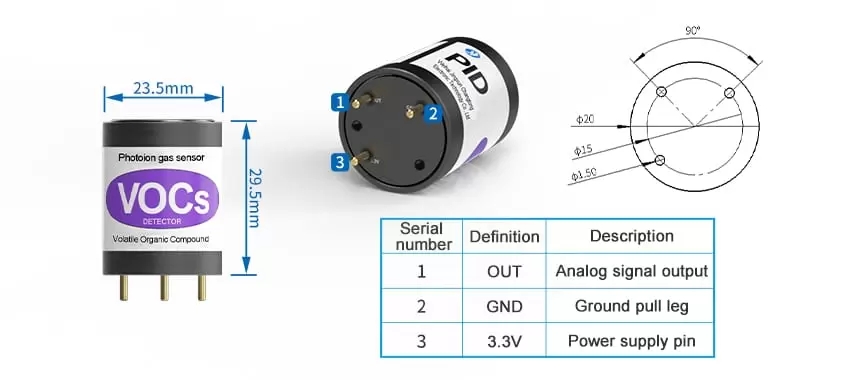Understand PID sensors
PID sensors have become increasingly popular in modern industry due to their ability to accurately measure and control temperature, humidity, etc. They are widely used in various fields such as HVAC systems, chemical processing, power generation, food and beverage production, and environmental monitoring.

PID stands for Proportional-Integral-Derivative, which refers to the three main control modes of these sensors. The proportional mode adjusts the output according to the error between the measured value and the setpoint. The integral mode accumulates the error over time and adjusts the output accordingly. The derivative mode anticipates future errors based on the rate of change of the input signal.
One of the most significant advantages of PID sensors is their high accuracy. By using advanced algorithms and precision components, they can provide accurate readings within ±0.1% full scale or better. This level of accuracy is crucial for applications that require tight process control, such as semiconductor manufacturing, pharmaceuticals, and aerospace engineering.
Advantage of PID sensors
Another advantage of PID sensors is their versatility. They can be configured to measure a wide range of parameters, including temperature, humidity, pressure, flow, pH, conductivity, and many others. This makes them ideal for use in complex industrial processes where multiple parameters need to be monitored simultaneously.

Moreover, PID VOC sensors are highly reliable and robust. They are designed to withstand harsh environments, such as high temperatures, high pressures, corrosive chemicals, and electromagnetic interference. They also feature built-in diagnostic capabilities, allowing users to detect faults and malfunctions quickly and easily.
limitations of PID sensor
Despite their numerous benefits, PID sensor also have some limitations. For example, they may not perform well in applications with slow response times or long dead times. They also require careful tuning to achieve optimal performance, which can be challenging for inexperienced users.
To overcome these challenges, manufacturers have developed new technologies such as self-tuning PID controllers, fuzzy logic PID controllers, and neural network PID controllers. These advanced controllers use sophisticated algorithms to automatically adjust the control parameters, resulting in improved stability, faster response times, and reduced overshoot.
conclusion
In conclusion, PID sensors play a critical role in modern industry by providing precise measurement and control of key process variables. They offer many advantages, including high accuracy, versatility, reliability, and robustness. While there are some limitations to their use, advances in technology are constantly improving their performance and making them easier to use. As such, PID sensors will continue to be an essential component of industrial automation for years to come.
